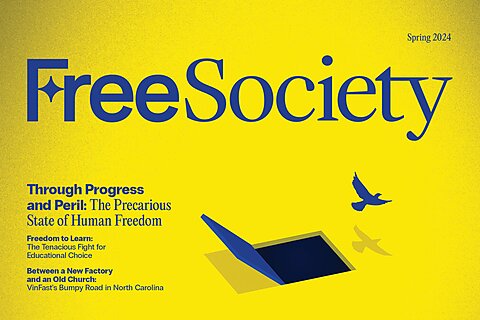“Every student deserves that,” Walt Tracy thought when he saw a credit recovery program that was providing individualized learning plans for students after COVID-19 interrupted their education. He and his wife Angela had long been drawn towards education and mentorship, but it was seeing individualized learning in action that propelled them to start UrbaNeXt. “We’re a nonprofit that seeks to partner with churches serving primarily under‐resourced communities to offer a microschool as an extension of their community outreach,” he explains.
“So many of these pastors will say, ‘I’ve always wanted to do a school, but it’s hard. It requires expertise. It requires resources to do all of that,’” says Walt. That’s where UrbaNeXt comes in, working behind the scenes to operate the school on behalf of the church, including employing teachers and paying for the curriculum. “You won’t usually see the UrbaNeXt name out there. We brand it to something meaningful to the church and the community in that particular site,” he continues.
This year, UrbaNeXt has one location in operation: the Fred L. Shuttlesworth Christian Academy. Walt says it’s a great example of how they partner with the local church community. The church that sponsors the school is the Greater New Light Baptist Church in Avondale. It was started by Fred L. Shuttlesworth, a minister who was heavily involved in the civil rights movement and a close colleague of Dr. Martin Luther King, Jr. So, the community named the school in his honor.
Fortunately, Walt lives in Cincinnati, Ohio, where the EdChoice scholarship is available for private school tuition. The Fred L. Shuttlesworth Christian Academy opened as a pilot school using private donor money while UrbaNeXt worked to get approved to accept the scholarships. “It took a year and a half to get through the eligibility process, so this is our first school year of operation under the EdChoice program. But now, having qualified for that, they allow us to add new campuses much more easily than that first campus,” Walt explains. Because of the scholarship program, churches can operate the microschools tuition‐free.
Walt says they’re talking to several other churches about opening microschools. “Our dream would be to have lots of microschools rather than a big 2,000-person high school or something,” he says. “I think a lot of what our parents value is the size, the closeness, the kind of safety, if you will, that comes with that.” Summit Christian School located in New Prospect Baptist Church in Cincinnati, has cleared the regulatory hurdles and been approved to open this fall. There is a third campus that is currently working on its educational occupancy permit, which is needed before it can accept the EdChoice scholarships.
“We’re using a digital curriculum, but it’s within a brick‐and‐mortar facility. They come in every day. Our teachers are really kind of counselors and coaches, if you will, because we’re relying on the curriculum to do much of the instruction,” Walt explains. “Our teachers follow the ‘guide by the side’ idea. They’re mentoring and, in our case, from a Christian school standpoint, we really look at it as discipling. They help goal set, encourage, remove barriers—that’s really the role that they play with their students.”
Beyond the digital curriculum, the schools have several offerings for students. As a Christ‐centered school, they have daily devotionals and weekly extended Bible programs. There’s a lot of emphasis on ‘calling readiness.’ “We believe for each of these young people that God has called them to a particular purpose and a way to serve in his Kingdom. We want to have them explore what that would be, so a kind of career exploration,” Walt explains. “And, as they advance age‐wise, job readiness skills and some vocational assessments. And then we have speakers come in from different industry areas and just kind of talk about what they do, what is their industry, what’s their career look like.”
Walt says they’re seeing amazing results already with the individualized learning approach. “We’ve seen examples of kids coming in literally two grade levels behind and within a year getting on grade level,” he says. That success and his visionary approach resulted in UrbaNeXt being named a quarterfinalist in last year’s Yass Prize.
For others who are interested in doing something similar, Walt encourages them to go for it. With UrbaNeXt, he hopes to simplify the process as much as possible—to essentially make it a turnkey operation for a church that’s interested in starting a school. He wants to help more schools get off the ground in the Cincinnati area, then elsewhere in Ohio, and then possibly beyond, especially in other states with robust school choice programs. Because, as he sees it, every child deserves an individualized education.









